Chemical laboratory analysis, often referred to as chemical testing or chemical analysis, is a critical component of various scientific and industrial processes. It involves the systematic investigation of chemical compounds, substances, and materials to determine their composition, properties, and behavior. Chemical analysis plays a pivotal role in a wide range of fields, including chemistry, materials science, pharmaceuticals, environmental science, and quality control.
Here is an overview of our chemical laboratory analysis:
Composition Determination: Analyzing the chemical composition of a substance or mixture, which involves identifying and quantifying the elements, compounds, or components present.
Quality Control: Assessing the quality and purity of raw materials, intermediates, and finished products to ensure they meet industry standards and regulatory requirements.
Environmental Monitoring: Detecting and measuring pollutants, contaminants, and hazardous substances in the air, water, soil, and other environmental matrices to assess their impact.
Safety and Regulatory Compliance: Verifying compliance with safety regulations and standards, including the evaluation of potentially hazardous chemicals and materials.
Research and Development: Supporting research and development efforts by providing valuable data and insights for the development of new products, materials, and technologies.
Chemical laboratory analysis employs a wide array of techniques and instruments to achieve its objectives. Some of the most common methods and equipment include:
Spectroscopy: Techniques like UV-Vis spectroscopy, IR spectroscopy, and mass spectrometry are used to analyze the interaction of substances with electromagnetic radiation.
Chromatography: Gas chromatography (GC), liquid chromatography (LC), and high-performance liquid chromatography (HPLC) are employed to separate and quantify components within a mixture.
Spectrometry: Atomic absorption spectrometry (AAS), inductively coupled plasma mass spectrometry (ICP-MS), and flame emission spectrometry are used for the quantitative analysis of elements
Microscopy: Microscopic examination allows for the observation and analysis of materials at the micro- and nano-scale.
Wet Chemistry: Classical wet chemical methods involve chemical reactions to determine the presence and concentration of specific compounds.
Thermal Analysis: Techniques like differential scanning calorimetry (DSC) and thermogravimetric analysis (TGA) provide information on thermal properties and decomposition behavior.
The process of chemical analysis often begins with sample preparation, which can involve grinding, homogenization, extraction, and dilution. Proper sample preparation is crucial to ensure accurate and reproducible results.
The data obtained through chemical analysis must be carefully analyzed and interpreted. This may involve comparing results to known standards, calculating concentrations, and drawing conclusions about the sample's composition and characteristics.
The findings of chemical laboratory analysis are typically documented in reports, certificates of analysis, or data sheets. These reports provide essential information for decision-making, quality control, and regulatory compliance.
Chemical laboratory analysis finds applications in various fields, including pharmaceuticals, food and beverage production, environmental monitoring, forensic science, petrochemicals, and more. It is integral to product development, safety, quality control, and scientific research.
In summary, chemical laboratory analysis is a fundamental scientific discipline that plays a crucial role in understanding and characterizing the chemical properties of materials and substances. It serves as the foundation for various industries and research endeavors, contributing to product quality, safety, and the advancement of scientific knowledge.
The chemical laboratory bench is an essential piece of equipment used in chemical laboratories for conducting experiments, research, and analysis. It provides a stable and safe work surface for handling hazardous substances and carrying out various chemical procedures.
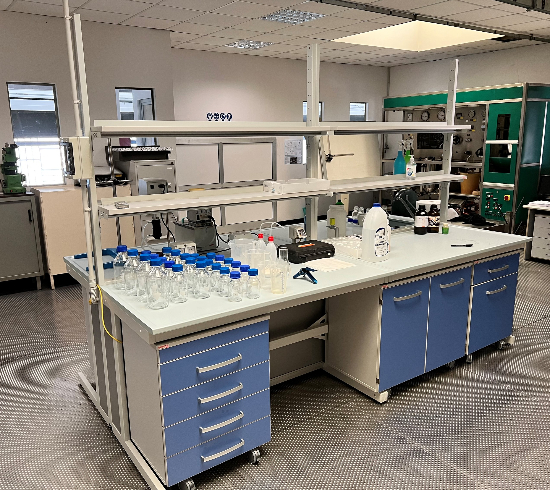
Chemical hoods, also known as chemical fume hoods or laboratory fume hoods, are essential safety equipment in laboratories and other settings where potentially hazardous chemicals are handled. They are designed to protect laboratory personnel from exposure to chemical fumes, vapors, and airborne particles by containing and safely venting these substances.

The TSI NanoScan SMPS™ Nanoparticle Sizer 3910 is a specialized scientific instrument used for measuring and characterizing nanoparticles in the sub-micrometer size range. It is manufactured by TSI Incorporated, a renowned company specializing in precision measurement instrumentation. The NanoScan SMPS™ 3910 is part of the Scanning Mobility Particle Sizer (SMPS) family of instruments and is designed for particle sizing and counting in the nanometer range: 10 to 420 nanometers (nm)

The Optical Particle Sizer (OPS) 3330 is a scientific instrument manufactured by TSI Incorporated, a renowned company specializing in precision measurement instruments. The OPS 3330 is designed for the accurate measurement and characterization of airborne particles, particularly in the sub-micrometer to micrometer size range. It utilizes optical scattering techniques to provide information about the size distribution of airborne particles in real-time. Range of measurement: 0.3 to 10 micrometers (µm)
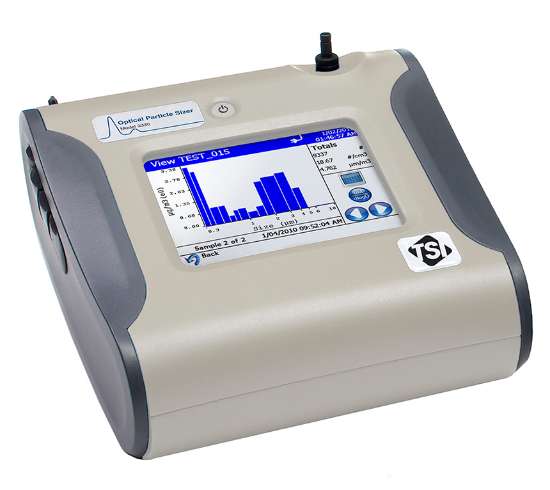
The FT-IR (Fourier Transform Infrared) spectrometer Shimadzu IR-Affinity 1S is a sophisticated analytical instrument manufactured by Shimadzu Corporation for the analysis of chemical compounds based on their infrared absorption characteristics. FT-IR spectroscopy is a versatile technique commonly used in chemistry, materials science, and various other fields for qualitative and quantitative analysis of organic and inorganic compounds.
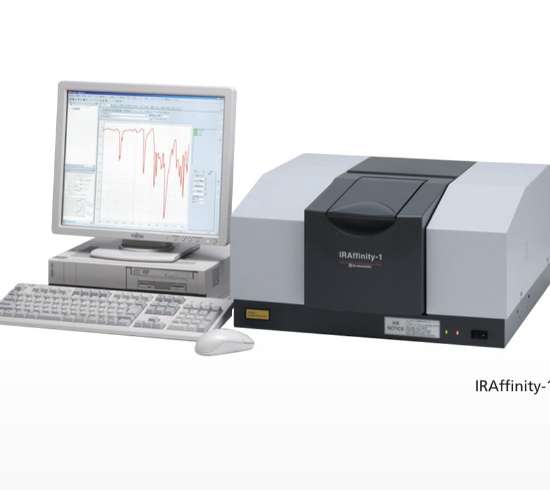
The Myr VR3000 viscosimeter is a specialized instrument used for the measurement of viscosity, a property that characterizes a fluid's resistance to flow. Viscosity measurements are essential in various industries and research fields, including chemistry, materials science, and quality control. The Myr VR3000 viscosimeter, manufactured by Myr, is designed to provide accurate and reliable viscosity measurements.
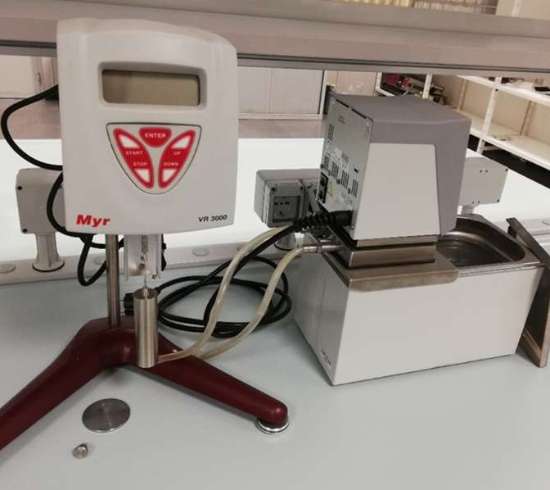
The Microbalance Radwag MYA 5.4YF is a highly precise and sensitive laboratory instrument designed for measuring the mass of very small quantities of materials, typically in the sub-milligram or even microgram range. Microbalances are essential tools in various scientific and research fields where high-precision measurements are required. The Radwag MYA 5.4YF is manufactured by Radwag, a company known for its precision weighing equipment.
Readability: 0.0001 (mg)
Repeatability: 0.0016 (mg)
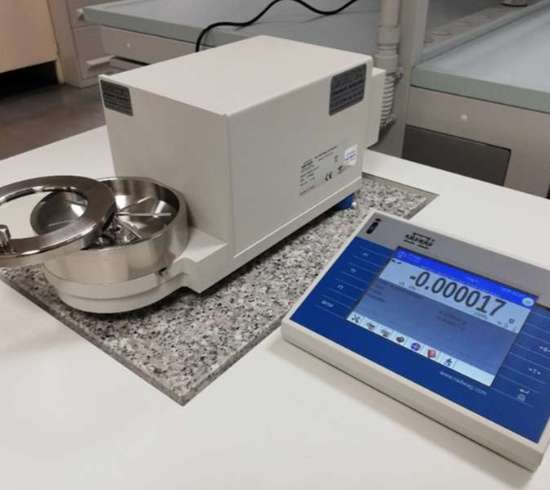
The LAP 323 Aerosol Spectrometer is an advanced scientific instrument used for the measurement and characterization of airborne particles, specifically aerosols. Aerosols are tiny suspended particles in the air, which can include pollutants, dust, droplets, and various particulate matter. The LAP 323 is designed to analyze the size distribution of aerosols in real-time and provide valuable data for research, environmental monitoring, and industrial applications.
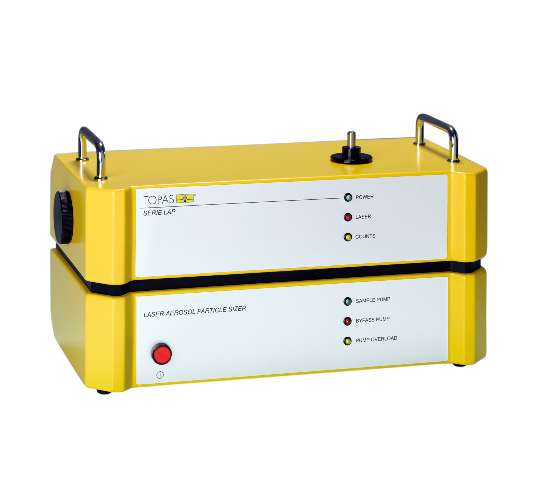
The Dräger X-act® 5000 is a specialized automatic tube pump used for the measurement and analysis of gases and vapors in ambient air. It is manufactured by Dräger, a renowned company known for producing high-quality safety and medical equipment. The X-act® 5000 is designed for various applications, particularly in industrial, environmental, and safety contexts, where the accurate monitoring and analysis of gas concentrations are crucial.
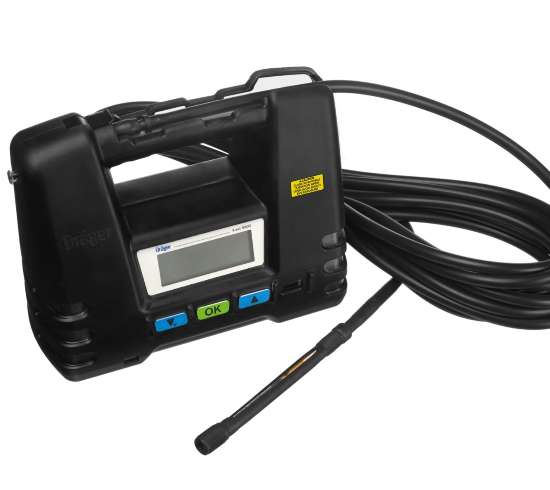
The KIMO AMI 310 is a multifunctional anemometer designed for measuring various environmental parameters, particularly those related to air velocity, temperature, humidity, and pressure. This type of instrument is commonly used in a wide range of applications, including HVAC systems, industrial settings, environmental monitoring, and research. The KIMO AMI 310 provides users with valuable data about air quality and conditions.
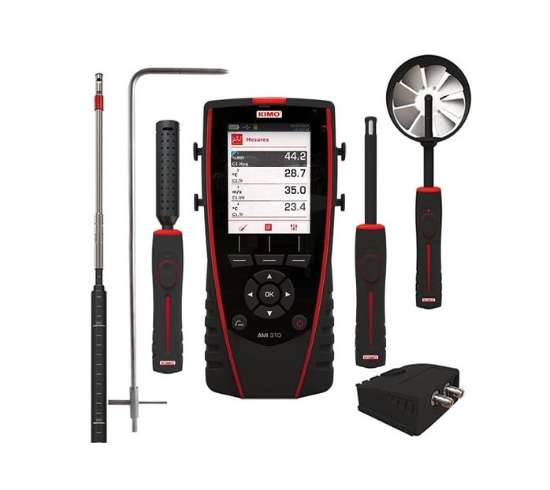
Digital precision technical scale with a weighing capacity: 2000g and a resolution: 0.01g. Backlit display. Repeatability: 0.02g. Linearity: ±0.03g. Rectangular weighing pan with dimensions 160 x 120mm made of stainless steel. Piece counting function. Stability indicator. Scale with dual power supply, rechargeable AGM battery and included power adapter.

DU-32 Digital ultrasonic cleaner, max capacity 3,2 Lt, Temperature range to 80°C, Timer 1-99min, Ultrasonic power control 1-5
